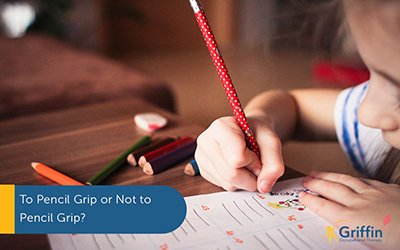Proprioception – our sixth sense
Proprioception is the awareness of how our muscles are moving. It is essential to help the brain to know where the body and limbs are in space. It helps us to know how hard or soft we are pulling or pushing. This article will cover

Proprioception – our sixth sense
Proprioception is the awareness of how our muscles are moving. It is essential to help the brain to know where the body and limbs are in space. It helps us to know how hard or soft we are pulling or pushing. This article will cover
So, what is proprioception?
Proprioception is often called our hidden sixth sense. The cells in our body that sense proprioception are called proprioceptors. These are located in our muscles and joints and they process sensory information when our body moves. When we move, the stretch on our muscles and the position changes of our joints sends proprioceptive feedback to the brain. This lets our brain know where our arms, legs, and body are at any given moment, which is important for our coordination.
What does our proprioceptive sense help us to do?
Our proprioceptive system helps us to:
How is proprioception different to touch?
Proprioception is different to touch sensory input. This is because with proprioception the sensory information comes from our muscles and joints, not our skin. This can be a bit tricky to understand at first. The main thing to remember is that proprioceptive feedback comes from special receptors in the muscles and joints which respond to body position and movement. Our touch system, however, responds to anything that touches our skin. You can read our post on the touch sense if you need more clarification on this sense.
Here’s a brief introductory video when Kim Griffin explains the proprioceptive sense, it’s a snippet from her longer Sensory Aware introduction which you can join here.
Why is proprioception so important?
The first reason, as I mentioned above, is that our proprioceptive sense lets our brain know where our body is in space. Another example of this is walking. You don’t need to look down at your feet to know where they are. You don’t need to look at your foot to lift it up, move it forward and then place it down again. These movements happen because your proprioceptors send constant sensory information to your brain about the position of your hip, knee, ankle, and toes. This ensures they move into the right place.
Each time we move the propriocepetive feedback from our muscles and joints tells our brain where our body is. This includes any time we move our arms, legs, hands, feet, neck, or spine. Even when we are still, the stretch of the muscles, or lack of stretch, and the joint position tell our brain where we are.
When you’re watching TV you can reach over to the controller and find it, if needed, without looking. Your proprioceptive system sends your arm to the right place. Your touch sense might feel around to locate the controller but your proprioceptive system then opens your hand and helps you to pick it up, direct it towards the TV and press the button.
Grading of force and speed of limb movement
When you press that button on the controller you need to press it with enough force to make it work. It’s important to not press it too firmly however as it might slide out of your hand or break. This is called grading your force. We do this all the time quite naturally and without thinking about it. Our proprioceptors are doing the thinking for us.
You also need to move the controller with the right speed so that you don’t crash your hand into yourself or another person. It’s the same with the cup we mentioned earlier. This is your speed of limb movement.
If we use too much force or speed we break things. If we use too little then we might not be successful. When hammering in a nail, for example, if you hit too hard you might bend the nail, but if you hit too softly it won’t go in. Cracking an egg is another great example, if you tap too lightly it won’t open, but if you crack it too quickly or with too much force you will be cleaning up a mess!
Proprioception is what allows our limbs to move into the right position, with the right speed and the right amount of force required for the activity.
Proprioception and muscle tone
Muscle tone refers to the constant contractions our muscles are making when we are still. It allows our bodies to increase or decrease tension as required when moving. Our proprioceptive system helps our vestibular sense to support this tension. Some children with sensory differences might have lower than average muscle tone and this can affect their postural control and stability.
Proprioception and balance
Finally, our proprioceptive sense helps to support our balance. It again works with the vestibular sense, which is primarily responsible for balance. Our proprioceptors give our brains even more information about where our body is and this helps with our balance. For example, if you step on an unstable surface, you receive vestibular information from your inner ear about the change in head position and you receive proprioceptive information about the position that your ankle, knee, and hip are in. The combination of this information helps your body keep upright and not fall over.
The proprioceptive sense is continually working in the background to ensure that our body is using the right amount of push and pull. It also helps us to make movements without needing to look. For example, when walking we don’t need to look at our feet to know where they are.
What might it look like if our proprioceptive sense isn’t working well?
When the proprioceptive system doesn’t process the information it receives very well, there are two typical responses. Some children and adults are slower to respond to the input, which means they need more proprioceptive input to understand where their body is in space. These children and adults could either respond by seeking out more input or they might be slower to respond to the input. The literature currently doesn’t give examples of sensitivity to proprioception. Some typical traits seen for each type of response are listed below:
Seeking out proprioception:
Slow response to proprioception:

James – seeks out more proprioceptive input
James loves to crash and bang. He loves jumping, puddles, trampolines, on the bed and anywhere! To understand the messages from his proprioceptive sense he needs more input. He presses very hard on his pencil and often accidentally breaks his toys. He loves firm hugs and rough and tumble play. Climbing and swimming have really helped with his body awareness and self regulation.
Why is proprioception important for learning and work?
In order to be successful with learning, you need to be able to sit in your chair and focus and attend to the teacher. If you’re not quite sure where your body is in that chair, you might need to move and seek out extra proprioceptive feedback. This can often get children and adults in trouble when all they are really trying to do is concentrate!
If you’re not really sure where your body is, you’re also likely to run into your peers more frequently. You might accidentally step on them as you aren’t quite sure where your foot is. Or bump them when reaching for the glue as you just aren’t judging the distance correctly. Or you might lean into them during carpet time or when you’re at the table as this gives you more feedback about where you are. Whilst this helps you, it can be annoying for your peers!
Why is grading of force important at school and home?
Proprioception allow you to grade force. Grading of force is essential for all fine motor and gross motor activities at school and home. When you write you need to be able to use enough pressure on the pencil. Use too little and the teacher can’t see your work. Use too much, and your hand will become tired quite quickly (you might even constantly need to sharpen your pencil).
If you can’t hold toys with the correct amount of force, you might not be able to make them work, or you could break them.
At lunch, if you pull too hard when opening your snack packet, you could drop your snack over the ground. If you’re too gentle though, it just won’t open and you’ll have to ask for help. When you’re trying to have that drink, moving your cup too quickly might lead to spilling its contents.
In the playground and at PE your proprioceptors make sure that you throw or kick the ball with the right amount of force to reach the target. Too little and you miss, too much and you may break something. Also, if you use too much force when playing in the playground you might accidentally hurt your friends.
There are few movement tasks at school and home that don’t rely on proprioception for success. If the body is not processing proprioceptive input well, then movements are often uncoordinated and can take a lot more effort. This can be frustrating for children and adults as, even though they are trying their best, their body just responds differently to others.
What about heavy work?
Heavy work is a term that is commonly used within sensory literature. You can learn more about it in this post The Mystery of Heavy Work.
For more information you might like these videos on proprioception:
Where to Next?
If you want to learn more sensory strategies linked to the proprioceptive sense, we recommend these articles
- The Mystery of Heavy Work
- Weighted blankets, benefits, precautions plus when and why to use them
- What are sensory circuits and how can I use them at school?
Or if you would like to learn more about sensory processing differences we recommend these ones
- What is Sensory Processing Disorder (SPD)?
- It is a Sensory Issue? Symptoms and Signs of Sensory Issues in Children
- Autism (ASD) and Sensory Processing Issues – Signs and How to Help
To learn even more we recommend our online training or Kim’s books
- Sensory Processing with GriffinOT (Free introduction available)
- Success with Sensory Supports
- 100 ideas for sensory processing



